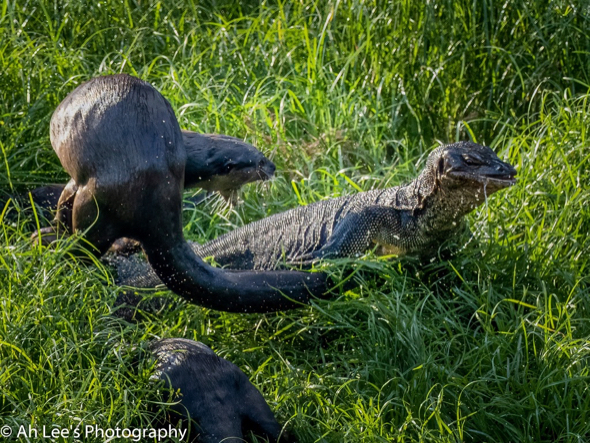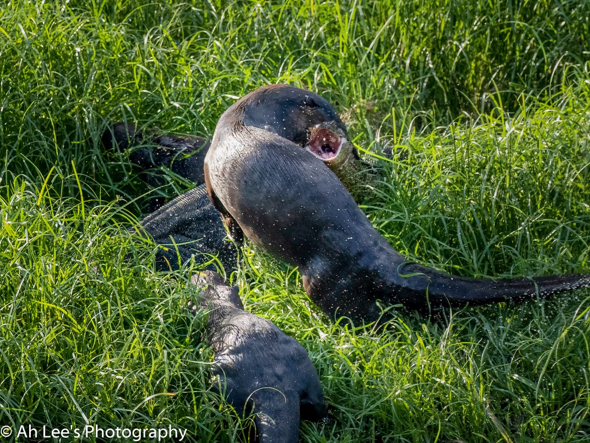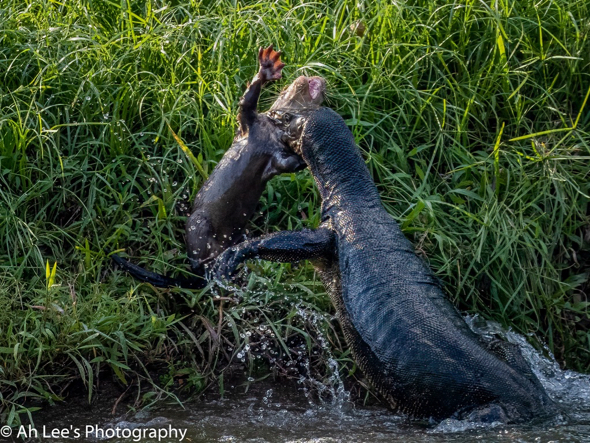“A group of almost 20 Smooth Otters (Lutrogale perspicillata) with pups were enjoying themselves catching fishes and feeding. Suddenly, there was a huge splash and one otter pup was caught by a huge Malayan Monitor (Varanus salvator). It was dragged to the shore screaming.
“Immediately, the mother otter sprang forth and attacked the monitor lizard. A bite to its neck cause so much pain that it released the pup. Other otters in the group also came to the aid of the mother and chased the monitor lizard up the tree. The pup which was bitten seem OK and re-joined the group.”
The Malayan Water Monitor is a fierce predator, known to attack a python, a rodent and turtles and young crocodiles.
The Smooth Otter is another fierce predator. Although it feeds mainly on fish, is also prey on small mammals. Tay Yew Nguan noted that although “otters are ferocious predator themselves. They have no known predators here in Singapore until now.”
Dr Lee Van Hien with Tay Yew Nguan
Singapore
15th July 2019












4 Responses
Hi there,
A small but important error that we would like to point out: monitor lizards are not predators but scavengers. As scavengers they only give way to opportunistic food. Like taking little ones of all sorts and injured animals that are not likely to fight back much.
Thanks for the clarification Winnifred & Joe.
I disagree with the statement [by Winnifred & Joe] and am of the opinion that monitor lizards can and will function as predator and scavenger whenever the opportunity arises. So the definition of a predator is one that will capture and consume a live prey, weak or otherwise. A scavenger is one that feeds on a dead or even decomposing animal. I hope this helps to clarify the fundamental ecological definitions, so everyone is aware of the differences.
So monitor lizards are very adaptable in this regard, which explains why they are so successful and diverse till this day.
I agree with Dr Leong. i have always liked monitor lizards and have had some as pets when it was legal to do so, Also, they are relatively common where I live, and they do recognise schedules and come for food. They are extremely opportunistic, and will eat whatever is available, alive or dead. If something small enough gets too close, they will eat it alive.
Yet, surprisingly, the Malayan Water Monitor becomes very tame, recognises the keeper, and can be handled easily. Just make sure that you wash your hands thoroughly before approaching one and that there are no traces of food anywhere on you, otherwise it will think that you are edible too.